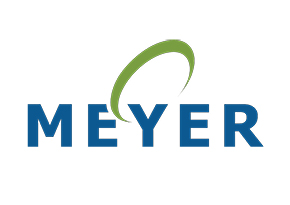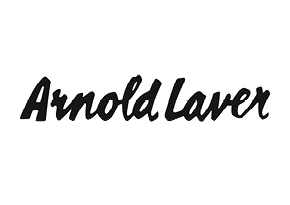- Case Studies
- Maggie's at the Robert Parfett Building
Maggie's at the Robert Parfett Building
Introduction
When the late Maggie Keswick Jencks was diagnosed with cancer, she resolved to do something to help others who had the same diagnosis, to create a place of refuge for them where they would find practical and emotional support in a non-institutional environment. It was a blueprint for a new type of care, and one which places great value on the power of architecture to lift the spirits and play a part in the process of therapy. There are now over twenty Maggie’s Centres in the UK and abroad; the latest, designed by Foster + Partners, is in Manchester, close to the Christie Hospital, a specialist in cancer treatment.
The centre is a building with long, low profile with a delicate timber lattice structure, its scale and domestic character reflecting the surrounding suburban houses and offering a welcoming and non-clinical environment. It is set in a sunny garden where plants and trees lift the spirits and contrast with the necessarily clinical atmosphere of the nearby oncology unit.
The plan is informal; there are no corridors or main entrance and patients wander through the garden to walk into the heart of the building, the kitchen, the central table and the fireside. A gently sloping roof extends outwards on its long east and west elevations to create verandas and courtyards. Although the centre is largely single storey, the roof rises at mid point to create a mezzanine level, naturally illuminated by triangular roof lights and supported by lightweight timber lattice beams. The beams act as natural partitions between different internal areas, visually dissolving the architecture into the surrounding gardens.
The centre combines a variety of spaces, from intimate private niches to a library, exercise rooms and places to gather and share a cup of tea. Support spaces are placed on the mezzanine positioned on top of a wide central spine, with toilets and storage spaces below, maintaining natural visual connections across the building.
Throughout the centre there is a focus on natural light, greenery and garden views. Small courtyards on the east side are private external spaces leading from counselling or treatment rooms; on the west side are more open, public spaces which extend into the garden as verandas. All these spaces open up to the garden through large, full-height sliding glass doors.
The south end of the building extends into a greenhouse, a garden retreat and a space for people to gather and enjoy the therapeutic qualities of nature and the outdoors.
In common with all Foster buildings, the design is a synthesis of the brief, the structure and the choice of materials. This is clear from Norman Foster’s earliest sketches of the structure, a delicate filigree of timber elements which resembles the extended skeleton of a bird, its wings outstretched at the sides. Within this sketch are contained all the elements of the plan – low in scale to respond to the suburban context, long on the east and west elevations to link to the surrounding garden landscape and with a central spine which encloses space for administration and services. The nature of the building suggested that the material for the structure would be domestic in scale and would emanate warmth yet be sustainable; timber was the inevitable choice.
The structure is exposed throughout the building and consists of laminated veneer lumber (LVL) trusses each with a set of diagonally opposed double web elements, creating a delicate filigree of timber. A series of LVL trusses form the central spine; they are set on the diagonal and rise to the ridge, where the spaces between them are infilled with triangular glazed rooflights. At their bases each pair of diagonal trusses meets at a triangular LVL node; this connects them to the LVL column below and connects both to an LVL truss beam which cantilevers outwards to support the gently sloping roof, supported at its end by a slender steel column.
All the trusses taper to reflect the magnitude and orientation of the forces acting on them – any portion that is superfluous has been removed. Analysis of the stresses caused by wind load (sideways) and snow and dead load (vertically) indicated where the timber could be optimised. The 7.5 metre long cantilever roof trusses taper as the bending forces reduce towards the cantilever tip, through the column to the pin connection at the ground, and at the central node above the spine. The ends of the top and bottom flanges become solid as the shear force increases along the section. The node is a key component of the structure, the point where vertical loads from the roof are transferred to the 3.1 metre high columns below. The node also acts as a portal frame haunch to provide the rigidity required to resist the horizontal wind forces which act across the structure.
The use of LVL creates a sophisticated piece of engineering, strong and lightweight, yet with all the warm tones and domestic qualities that timber provides. The trusses were produced from Kerto LVL provided by Metsä Wood; 3mm thick rotary-cut sustainable Nordic spruce veneers bonded to form a continuous board and cut to suit the required basic shape. These were transported to the factory of timber specialist Blumer-Lehmann in Switzerland where they were CNC cut to form the series of tapered layers which make up each truss. ‘By studying the process’ explains Darron Haylock, project architect, ‘we were able to maximise opportunities to refine it’. For instance, although all the LVL layers which make up a single tapered truss follow a consistent perimeter profile, two inner layers were specially cut to create the two sets of diagonal web flanges; all the layers were then dowelled and glued together to form the final truss. Likewise, the LVL layers of the truss columns and the cantilevered beams were extended at the ends to create the triangular node; during construction the column layer of the node slots between the cantilever truss layers of the node, in a manner similar to a halved timber joint.
All fixings between the trusses are concealed; a metal Y-shaped strap along the top of each cantilever truss connected it to the diagonal roof trusses.
Sustainability
The desire to create a homely environment, in contrast to the institutional space of a clinic, defined the approach to the building environmental design; natural ventilation, daylighting and radiant floors provide a comfortable environment within a low-energy building. Passive design elements, such as the deep roof overhang, help to shade the building from excessive solar gain during the summer and capture the low winter sun – thus minimising energy consumption. The sustainability of the building in use was also considered, with water efficient fixtures, waste separation and a greenhouse.
Sustainably sourced Nordic spruce was the material used for the Kerto LVL trusses. Whole logs were used in the manufacturing process of Kerto, ensuring minimal waste. The fabrication of the trusses in the Blumer-Lehmann factory offered all the advantages of timber prefabrication; fast and efficient construction, elimination of wet trades and a superior pre-finished product. The waste material generated in the fabrication of the trusses was used as fuel to heat the factory.
April 2016
Year Published:November 2016
Building Type:Cancer support centre
Location:Manchester
Timber Species:Sustainably sourced Nordic spruce
Timber Element:Structure
Client:The Maggie Keswick Jencks Cancer Caring Centres Trust
Architect: Joinery:Blumer Lehmann
SJB engineers (RIBA Stage 4)
Dan Pearson Studio
Main Contractor: Structural Engineer: Timber Supplier:Metsä Wood Kerto
Suggested Reading
Specifying externally exposed structural timber
This Wood Information Sheet (WIS) looks at some of the factors to consider when specifying a desired service life for structural timbers that are to be exposed outdoors but not in contact with the ground.
This WIS addresses general principles of structural design only, giving an overview of the...
24/11/2017
Standards Update October 2017
An update of British, European and International Standards relating to timber, including new and revised Standards, those withdrawn or amended and drafts now available for public comment, updated bimonthly.
30/10/2017
List of British Standards October 2017
A list of British Standards which relate directly to timber, updated bimonthly.
30/10/2017






















